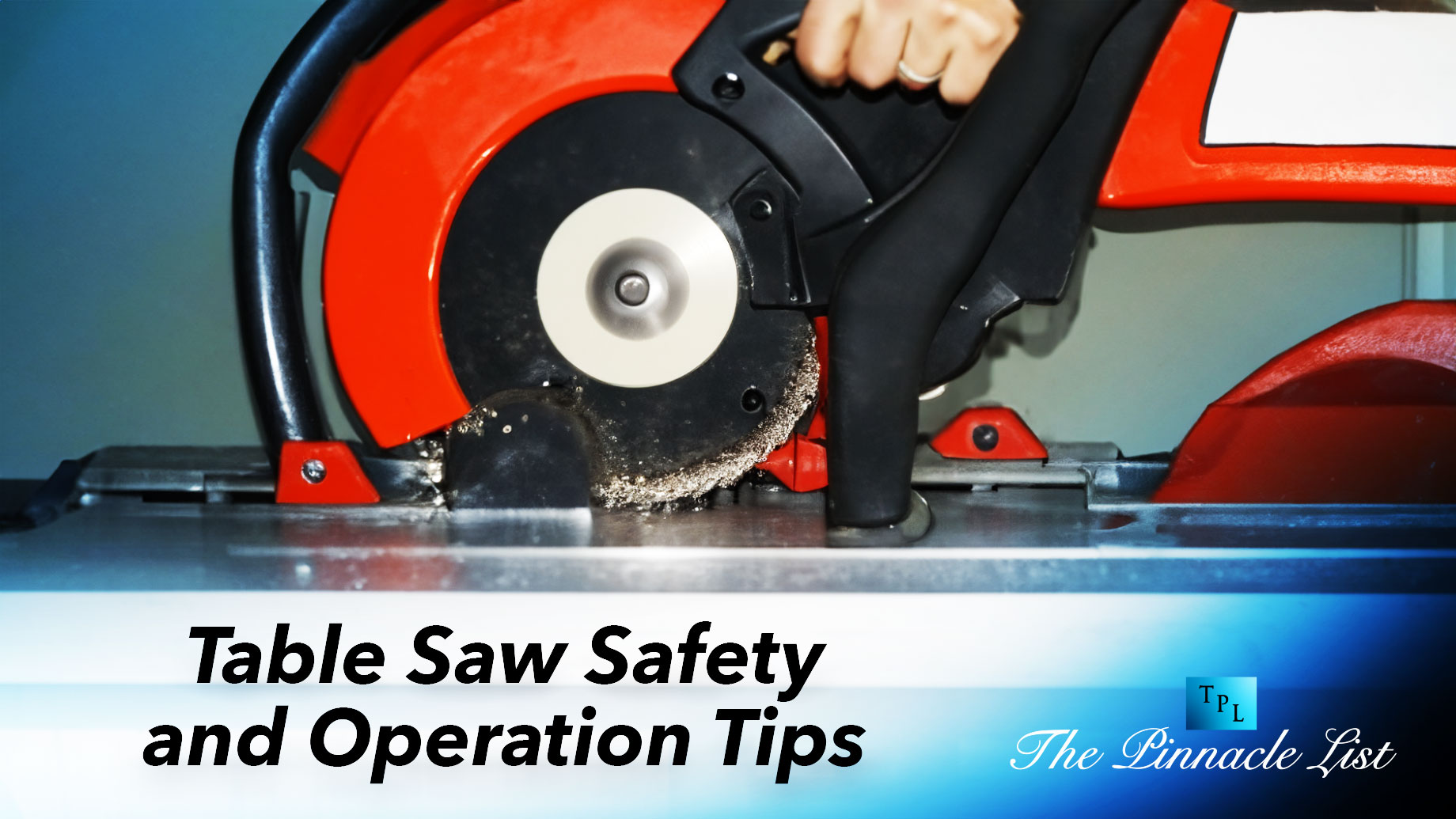
One of the most useful pieces of equipment in the toolbox of a woodworking enthusiast is a table saw. However, with its powerful blade and potential for kickback, it’s also a tool that demands respect and a deep understanding of safety protocols.
This article dives deep into the essentials of table saw safety and operation, aiming to provide readers with a comprehensive guide, ensuring every woodworking project remains a safe endeavor.
Our goal is to keep you educated and safe, whether you’re a beginner seeking direction or an experienced woodworker brushing up on safety. One critical aspect of this guide? Understanding the importance of the table saw blade direction. Let’s dive in.
1. The Pillars of Table Saw Safety
Safety, when working with any power tool, is paramount. A table saw is no exception. The potential risks range from minor cuts to severe injuries. However, these hazards can be significantly reduced with the right information and cautious operation.
- Table Saw Blade Direction: Often overlooked, understanding the correct table saw blade direction is pivotal to ensuring smooth, efficient cuts and minimizing the risk of kickback. Always ensure that the blade direction is oriented so that it cuts into the wood in the opposite direction of the feed rate. This reduces the chance of the wood getting caught and propelling back toward the operator.
- The Role of the Riving Knife: Positioned right behind the saw blade, the Riving knife is crucial in preventing kickback. It ensures the wood doesn’t close back on itself and gets caught on the back end of the blade.
- Personal Protective Equipment (PPE): Never underestimate the importance of PPE. Your woodworking attire should include a dust mask, safety glasses, and ear protection.
2. Setting Up for Success
A well-prepared workspace lays the foundation for a successful and safe woodworking project. From ensuring your table saw is on a stable surface, to keeping your tools within arm’s reach, the initial setup can make a significant difference.
- Understanding Blade Types: Different projects require different blades. Familiarizing yourself with blade types, from ripping to cross-cut blades, ensures optimal performance and safety.
- Work Area Preparation: A cluttered workspace is a hazard. Make sure the space where you will be using your table saw is neat, well-lit, and organized. This minimizes distractions and potential obstacles, paving the way for efficient operation.
3. Expert Techniques for Precision and Safety
Once you’ve grasped the basics, diving into more advanced techniques can elevate your woodworking projects. These techniques not only enhance precision but often bolster safety measures.
4. The Push Stick: Not Just for Beginners
A push stick isn’t just a tool for novices—it’s an essential safety device for all. When cutting narrower pieces of wood, a push stick ensures your hands remain a safe distance from the blade, eliminating the risk of injury without compromising on the precision of the cut.
5. Blade Maintenance and Sharpness
A dull blade is a dangerous blade. When a blade loses its sharpness, it requires more force to cut through wood, increasing the risk of kickback and uneven cuts. Regularly inspecting, cleaning, and sharpening your blade—or replacing it when needed—ensures smooth operations and reduces safety hazards.
6. Emergency Shut-off Feature
Most modern table saws come equipped with an emergency shut-off feature. This is designed to stop the saw immediately in case of unexpected situations. Familiarize yourself with its location and operation so you can quickly turn off the saw if necessary.
7. Avoiding Distractions
Operating a table saw requires undivided attention. Ensure that you’re free from distractions, including mobile phones or unnecessary conversations with others. Remember that a split second of distraction can lead to serious injuries.
8. Use Featherboards for Support
Featherboards are valuable tools to maintain the wood’s position during cutting. They keep the workpiece pressed against the table or fence, ensuring a straight cut and reducing the risk of the wood binding against the blade.
9. Regularly Inspect for Damages
Regularly check your table saw for any damages or worn-out parts, such as belts, cords, and switches. Addressing these issues promptly reduces the risk of malfunctions and potential accidents.
10. Keep the Table Surface Clean and Smooth
Sawdust and debris can make the table slippery, affecting the smooth movement of the wood piece. After every use, clean the table surface to ensure it remains smooth and devoid of any particles that might hinder your work.
11. Know Your Saw’s Limitations
Every table saw has its cutting capacity, blade speed, and recommended wood thickness. It’s essential to understand these limitations and not push the saw beyond its capacity. Attempting to cut wood thicker than the saw’s capability or forcing it can lead to dangerous situations.
12. Always Stand to the Side
When feeding wood into the table saw, stand to one side rather than directly behind the wood piece. This way, in the unlikely event of a kickback, the wood will not be directed towards you.
Conclusion
Safety in woodworking, especially when using powerful tools like the table saw, cannot be overstressed. With the right knowledge, protective gear, and adherence to safety protocols, you can ensure your woodworking projects are not only of high quality but also completed in a safe environment. Always prioritize your safety above all else and continue educating yourself on best practices.